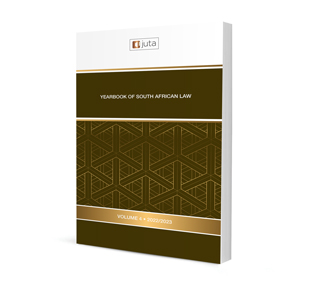Criminal Law

Criminal Law
Author Shannon Hoctor
ISBN: 978 148515 163 0
Affiliations: BA LLB LLM (UCT) DJuris (Leiden) PG Dip (Latin) (Wales Trinity Saint David); Professor of Law, Department of Public Law, Stellenbosch University; Advocate of the High Court of South Africa
Source: Yearbook of South African Law, Volume 4, p. 364 – 389